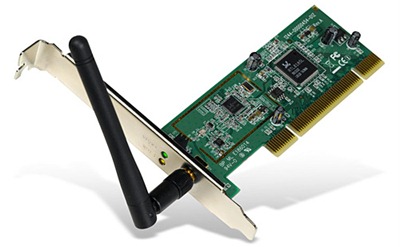Why Is It Most Motherboards Don’t Have Built-In Wi-Fi?
 The cheapest new motherboard for a PC is about $40. On that motherboard regardless of OEM you will find a built-in network interface that allows for 10/100Mbps wired Ethernet connectivity. For any other higher-priced motherboard you would buy, it would also have built-in wired networking. In fact it’s probably true you’d have a hard time finding a PC (meaning not server) mobo without an Ethernet LAN port.
The cheapest new motherboard for a PC is about $40. On that motherboard regardless of OEM you will find a built-in network interface that allows for 10/100Mbps wired Ethernet connectivity. For any other higher-priced motherboard you would buy, it would also have built-in wired networking. In fact it’s probably true you’d have a hard time finding a PC (meaning not server) mobo without an Ethernet LAN port.
Here’s a challenge for you: Find a motherboard with built-in wireless networking on the board. Do they exist? Yes, but it will be something like this, and it’s not cheap.
Now of course you could just say “install a wireless card” or “use a wireless USB stick”, both of which are cheap and readily available, but why do we have to do that? Given how cheap wireless networking is, why is it not included on every motherboard just like wired networking is?
In the notebook/netbook/tablet dept., there isn’t a single one made today that I know of that doesn’t have wireless built-in, so it’s not an issue of whether OEMs can place the technology on them. It’s also not an issue of driver support since both Windows and Linux support many different wi-fi cards.
Does anyone have a good explanation as to why wi-fi isn’t included on every PC motherboard?
















6 thoughts on “Why Is It Most Motherboards Don’t Have Built-In Wi-Fi?”
Buying a laptop implies mobility, thus a wifi adapter should be built-in to the mobo. Buying a desktop implies that the machine will be located in the same place for the next few years, requiring only a wired connection.
If somebody actually prefers to use a slower, less secure connection on their desktop because they find it difficult to run an Ethernet cable, they probably need to re-asses their computing needs and buy a notebook instead.
ps: This is an issue that car manufacturers are already facing from irrate customers complaining about their wifi/bluetooth toys not properly synching with their new car… whose fault? Car manufacturer, phone/tablet makers, bluetooth, wifi? Someone will need to ramp up customer service centers to massage angry egos…
a favorable manufacturing cost and they scrapped the idea because it
would make their boards $60.00+ more expensive.
There can be quite a difference between working, working well, and working great.
http://www.newegg.com/Product/Product.aspx?Item=N82E16813157134
In stock.
I remember looking at an ASUS motherboard with built-in WiFi. I don’t think they’re hot sellers.